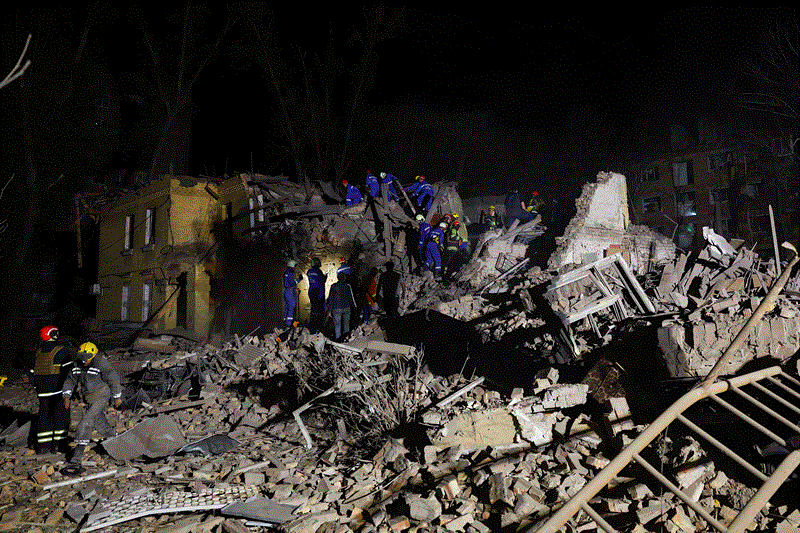There is a new threat to life on Earth. It could cause extinction-level event

- The threat has been identified in the blast wave of stars
- Astronomers have observed 31 supernovae and their aftermath
- The blast wave may reach Earth-like planets months to years after the explosion
Life on Earth in itself is fragile and is a result of millions of coincidences coming together on the planet for us to emerge and survive. Astronomers have now identified a new threat to the planet that could come from deep space and is beyond our control.
Astronomers using the Chandra X-ray Observatory and other telescopes have identified that there could come a phase when X-rays generated from exploded stars can affect planets over 100 light-years away, including Earth. The new study indicates that exploded stars pose more danger to planets than before.
The threat has been identified in the blast wave generated by the exploding stars, which produce a large dose of X-rays that reaches Earth-like planets months to years after the explosion and may last for decades. “Such intense exposure may trigger an extinction event on the planet,” astronomers said in a release.
“If a torrent of X-rays sweeps over a nearby planet, the radiation would severely alter the planet’s atmospheric chemistry. For an Earth-like planet, this process could wipe out a significant portion of ozone, which ultimately protects life from the dangerous ultraviolet radiation of its host star,” Ian Brunton of the University of Illinois, who led the study, said in a statement.
Astronomers have observed 31 supernovae and their aftermath in deep space to reveal that planets can be subjected to lethal doses of radiation located as much as about 160 light-years away. The team targeted the telescopes on supernova 1979C, SN 1987A, SN 2010jl, and SN 1994I.
Researchers said that After years of lethal X-ray exposure from the supernova’s interaction, and the impact of ultraviolet radiation from an Earth-like planet’s host star, a large amount of nitrogen dioxide may be produced, causing a brown haze in the atmosphere.
“The Earth is not in any danger from an event like this now, because there are no potential supernovae within the X-ray danger zone. However, it may be the case that such events played a role in Earth’s past,” co-author Connor O’Mahoney added.
Past research has concluded that supernovae occurred close to Earth between about two and eight million years ago, which were 65 and 500 light-years away from Earth, but still slammed into the planet.

“Further research on X-rays from supernovae is valuable not just for understanding the life cycle of stars, but also has implications for fields like astrobiology, paleontology, and the earth and planetary sciences,” co-author Brian Fields of the University of Illinois said.
Summary and Conclusions
These events, while rare, maintain a notable influence in the radiation environment of the galaxy and pose a substantial threat to terrestrial biospheres, as their ionizing radiation can induce significant alterations to a planet’s atmospheric chemistry at formidable distances. We maintain strict standards for our calculations and analysis, adopting a high critical fluence value for the given energy ranges of the X-ray data and only considering the limited window of confirmed X-ray observations. Even with these restrictions, we have calculated that these SNe are capable of imposing lethal effects at distances well over the 10 pc standard of previous research.
SN X-ray emission occurs as a distinct stage of an SN’s radiation emission for nearby planets within tens of parsecs: typically months/years after the initial outburst, and thousands of years before the arrival of cosmic rays. Therefore, a corollary of the formidable threat found here is that this alters the timeline by which we know an SN can influence a nearby planet, adding an additional phase of adverse effects.
This lethality of X-ray-luminous SNe poses further constraints with respect to if and/or how life can evolve elsewhere in our galaxy and other star-forming regions. As we continue to detect more exoplanets and further the search for extraterrestrial life, SN X-ray emission needs to be considered in attempts to quantify habitability and/or locate potential biospheres.
We now open the discussion as to whether these X-ray-luminous SNe may have influenced life on Earth itself. The confirmed detection of SN radioisotopic material dating from the last ∼8 Myr of the geological record (Wallner et al. 2016) is consistent with the presence of our solar system within the Local Bubble, a hot, low-density region of space that is thought to be a product of numerous nearby SN explosions coinciding with Earth’s early Neogene Period (≲20 Myr) (Breitschwerdt et al. 2016; Zucker et al. 2022). This means that a nearby SN has most certainly occurred in Earth’s geological past, likely numerous times. Combining these findings with our threat assessment here, it is possible that one or more of these SNe were interacting and thus inflicted a high dosage of X-ray radiation on Earth’s atmosphere. This would imply that SN X-ray emission has had a notable impact on Earth and potentially played a role in the evolution of life itself.
Here we have shown that simply from confirmed X-ray observations alone, the interacting X-ray phase of an SN’s evolution can entail significant consequences for terrestrial planets. We limit any further speculation until further developments in X-ray astronomy are made; however, the evidence presented here certainly points to this process being capable of imposing lethal consequences for life at formidable distances.
We thus conclude with the comment that further research into SN X-ray emission has value not just for stellar astrophysics, but also for astrobiology, paleontology, and the Earth and planetary sciences as a whole. We urge follow-up X-ray observations of interacting SNe for months and years after the explosion and urge for the continued development of X-ray telescopic instrument implementation in the hard X-ray band. These observations and innovations will shed light on the physical nature of SN X-ray emission and will clarify the danger that these events pose for life in our galaxy and other star-forming regions.
Published 2023 April 19 • © 2023. The Author(s). Published by the American Astronomical Society.






